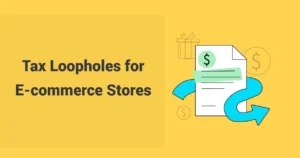Canadian YouTubers thrive on earnings from their channels. Taxes can seem tough, though. The CRA treats your income as self-employment earnings. Over 40,000 creators earn from content in 2025. Knowing taxes for content creators helps you avoid penalties.
This YouTuber tax guide from SAL Accounting offers clear steps to manage your tax responsibilities and save money. Keep reading for more.
Quick Takeaways
- Canadian YouTubers must pay tax on all income and report it to the CRA.
- File taxes with Form T2125 and T1 General by June 16, 2025; pay by April 30.
- Deduct cameras, software, and travel to cut your taxable income.
- If you earn over $30,000, register for GST/HST and collect 13% (Ontario rate).
- Save 25–30% of income for taxes and 12.2% CPP contributions.
Do YouTubers Have to Pay Tax in Canada?
All YouTube income (AdSense, sponsorships, affiliates, or gifted products) is taxable. The CRA views you as self-employed if you create content for profit (Canada Tax Guide). Income under $15,705 (2025 basic personal amount) is tax-free but must be reported. Skipping reports risks penalties. Consult our bookkeeping and CPAs to stay compliant.
YouTube Income and How to Report It for Taxes in Canada
The CRA sees YouTubers as self-employed if you make content to earn money. You must report all your earnings as business income to the CRA (income tax page). Taxable income includes:
- AdSense: Cash from video ads, like $500/month.
- Sponsorships: Money from brand deals, like $1,000/video.
- Affiliate Marketing: Earnings from product links, like $200/month.
- Merchandise: Sales of branded stuff, like $300.
- Super Chats: Viewer donations during streams, like $50/stream.
- Gifted Products: Items you get, like a $500 camera, valued at fair market value.
Non-monetary income gets taxed at its fair market value. So check the guide on e-commerce taxes in Canada to report it right. Fan gifts are usually non-taxable unless from an employer.

Taxes for Content Creators Canada: What YouTubers Pay
YouTubers deal with three main taxes on their YouTube income. We explain each one below in simple terms to help you plan:
1.Income Tax
You pay income tax on YouTube cash, like AdSense or sponsorships, as self-employment income. The CRA adds federal and provincial taxes, around 20–30% for $50,000, depending on your province (tax rates and income brackets). The first $15,705 is tax-free in 2025.
Example: Sarah earns $40,000 from YouTube in Ontario. She owes about $6,500 in taxes after the tax-free amount.
2.GST/HST
If you earn over $30,000 a year, you must sign up for GST/HST, collect it on stuff like sponsorships, and send it to the CRA. Ontario’s HST is 13%. Signing up lets you claim credits for taxes paid on business stuff. Under $30,000, you don’t have to sign up for GST/HST return in Canada.
Example: Sarah’s $40,000 means she signs up for HST and collects $5,200 (13% of $40,000).
3.CPP Contributions
You pay CPP contributions for your pension as a self-employed YouTuber. You cover both parts (employee and employer) for 12.2% total. This applies to net income between $3,500 and $79,400 in 2025. It’s separate from income tax and helps your future pension. Our accountant for self-employed can help you figure it out.
Example: Sarah’s $40,000, minus $5,000 in expenses, leaves $35,000 net. She pays about $4,270 in CPP.
4.Corporate Tax
You skip corporate tax unless you turn your channel into a corporation. Most YouTubers, as sole proprietors, only deal with income tax, GST/HST, and CPP.
Pro Tip: Keep 25–30% of your income for taxes and CPP. Check the CRA Tax Calculator to figure out your tax bill.
Check out the taxes YouTubers need to pay in 2025, made simple for easy planning:
| Tax Type | What It Is | Who Pays | Rate/Threshold |
| Income Tax | Tax on YouTube earnings | All YouTubers | 20–30% over $15,705. Varies by province. |
| GST/HST | Sales tax on big earnings | Over $30,000 earners | 13% (Ontario). Claim expense credits. |
| CPP Contributions | Pension for self-employed | All self-employed YouTubers | 12.2% on $3,500–$79,400 net income. |
| Corporate Tax | Tax for incorporated channels | Incorporated YouTubers | None for sole proprietors. |
YouTuber Tax Deductions in Canada
You can lower your taxes by deducting business expenses for your YouTube channel. We list key deductions below to help you save money (CRA’s deductions guide).
- Equipment: Deduct gear like cameras or mics, spread out with CCA.
- Software: Write off editing or accounting app subscriptions.
- Home Office: Take off part of rent or utilities for your filming spot.
- Marketing: Cover costs for website hosting or social media ads.
- Professional Services: Include fees for accountants or lawyers for taxes or contracts.
- Travel: Subtract travel costs for filming, like gas or hotels.
- Training/Courses: Deduct fees for classes to improve your videos, like editing lessons.
- Internet/Phone: Take off part of internet or phone bills used for your channel.
- Advertising/Promotion: Write off costs for promoting videos, like sponsored posts.
Pro Tip: Keep receipts in Evernote for easy tax prep. Get organized with the best bookkeeping tools for small business owners in Canada.
Case Study: Taxes with Deductions
Problem: An Alberta full-time YouTuber reached out. They made $60,000 (sponsorships $40,000, affiliates $15,000, merch $5,000). They missed deductions, facing a $12,000 tax bill despite having receipts.
What We Did: We suggested deducting $12,000: $3,000 camera, $1,200 software, $2,400 home office, $1,500 marketing, $2,000 travel, $1,900 internet/phone. We advised GST/HST registration, claiming $1,200 credits, and using Evernote for receipts.
The Result: Net income fell to $48,000, tax bill to $8,500. They collected $7,800 HST, claimed $1,200 credits, and saved big.
GST/HST Registration for Canadian Content Creators
If your YouTube income hits over $30,000 a year, you need to sign up for GST/HST and send it to the CRA. Here’s how to do it and keep the CRA happy.
- Check Your Earnings: Total your income, like sponsorships or AdSense, over four quarters. If over $30,000, you must register. Under that, it’s optional, but you can claim credits.
- Join Online: Sign up using CRA’s My Business Account. It’s quick and helps you manage filings.
- Add the Tax: Charge 13% HST (in Ontario) on things like sponsorships. Include your GST/HST number on invoices.
- Send Reports: File GST/HST reports yearly or quarterly, listing what you collected and credits you claimed.
- Claim Credits: Deduct GST/HST paid on business items, like cameras, to lower your bill.

How to File Your Taxes as a YouTuber in Canada + Forms
Filing taxes as a YouTuber isn’t hard if you know the steps. We’ll walk you through them to keep you organized and on the CRA’s good side.
1.Grab Your Income Records
Collect all your YouTube cash, like AdSense, sponsorships, or affiliate earnings. Pull bank statements, PayPal records, or invoices. Don’t forget gifted items. Value them at market price. The best ecommerce accounting software in 2025 may help.
2.Gather Expense Receipts
Save receipts for business stuff, like cameras, software, or video-related travel. These cut your taxes with deductions. Store them digitally or in a folder for quick access.
3.Fill Out Form T2125
Complete Form T2125 to list your YouTube income and expenses. It figures out your net income for taxes. Check it twice to avoid CRA trouble. Here is the form:

4.Add to T1 General
Put your T2125 totals into your T1 General return. This mixes your YouTube income with other earnings to calculate your tax bill. Use software for accuracy.
5.Hit the Deadlines
File your tax return by June 16, 2025, since you’re self-employed. Pay any taxes you owe by April 30, 2025, to skip penalties.
Use the table below to file your YouTube taxes in 2025:
| Filing Step | What to Do | What to Include | Why It Matters |
| Grab Income Records | Collect YouTube earnings | AdSense, merch, gifts (market price). | Reports all income to CRA. |
| Gather Expense Receipts | Save expense proof | Cameras, software, travel. | Cuts taxes with deductions. |
| Fill Out Form T2125 | List income, expenses | Earnings, deductions for net income. | Finds taxable income for CRA. |
| Add to T1 General | Combine with other income | T2125 totals. | Sets your tax bill right. |
| Hit Deadlines | File, pay on time | File by June 16; pay by April 30. | Skips late penalties. |
Avoiding Penalties When Paying Taxes on YouTube Income Canada
Nobody wants trouble with the CRA. You can keep your YouTube taxes smooth with these easy tips to dodge penalties.
- Report All Cash: Skip reporting YouTube money and the CRA hits you with a 10% penalty plus interest.
- Save Records: Keep receipts and bank statements for six years. The CRA might check them during audits.
- Fix Mistakes Early: Use the CRA’s Voluntary Disclosures Program (VDP) to correct errors without big penalties if you act first.
Pro Tip: Pay taxes quarterly if you earn over $3,000 to avoid a huge bill at tax time. Learn more in “6 E-Commerce Accounting Errors That Could Cost You Thousands”

Case Study: Dodging CRA Penalties
Problem: A Manitoba YouTuber got in touch post-CRA audit. They earned $45,000 (AdSense $20,000, sponsorships $22,000, affiliates $3,000). They skipped $5,000 income, facing a $500 penalty plus interest, and lacked $1,500 expense receipts.
What We Did: We advised using the CRA’s Voluntary Disclosures Program for the $5,000. We suggested PayPal and bank records to verify income and get $1,500 deductions (software, marketing). We recommended quarterly payments and a spreadsheet.
The Result: CRA waived penalties, accepted $5,000 income, $1,500 deductions. They paid $1,000 extra tax, cut the bill to $8,500 with better records.
Manage your YouTube deductions with our bookkeeping services for ecommerce at SAL accounting.
Final Thoughts
Canadian YouTubers can keep more money by handling taxes well. This post explains your tax duties in plain steps. Track your cash and expenses to cut your taxes. File on time to avoid CRA trouble. SAL Accounting’s here for the hard tax stuff.
Contact us for a free chat to make your YouTube taxes simple and get help tailored to your needs.
Frequently Asked Questions (FAQs)
Yes, you must report all YouTube cash, like AdSense, sponsorships, affiliates, merch, or gifted stuff, to the CRA as self-employment income. Not reporting risks penalties.
Fill out Form T2125 to list your YouTube income and expenses. Add it to your T1 General return.
Yes, you can deduct business items like cameras, mics, and editing apps. Gear gets deducted over time with Capital Cost Allowance. Software subscriptions come off fully each year.
No, you don’t need a business as a sole proprietor. If you make over $30,000 a year, sign up for GST/HST.
You’ll get a 10% penalty plus interest on unreported cash. The CRA might audit you and check bank records. Fix mistakes fast with the Voluntary Disclosures Program to avoid penalties.
All your YouTube money is taxable, but the first $15,705 in 2025 is tax-free. You pay federal and provincial taxes on the rest, around 20–30% for $50,000, depending on your province.
Most YouTubers stay sole proprietors to avoid corporate tax. Only set up a company if your income covers the extra hassle and costs. Talk to an accountant first.
QuickBooks, FreshBooks, and Wave are great for tracking your YouTube cash and expenses. They make filling out Form T2125 super easy.






